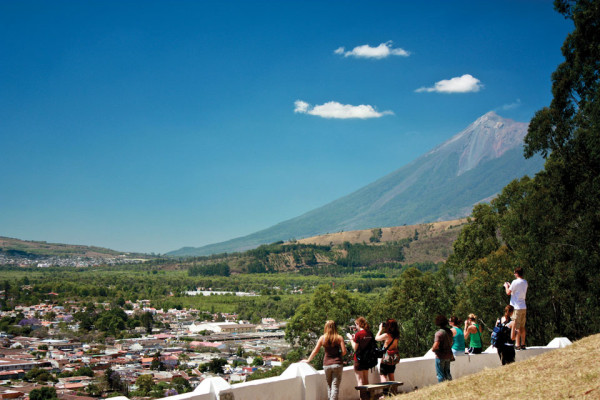What’s the canícula in Guatemala?
Guatemala’s rainy season is roughly from May 15—Oct. 15 with a break in July/August called the canícula. Beginning with the cabañuelas (the first 12 days of the year – each day representing the weather for that month), predictions are made as to when the canícula will fall.
According to the Instituto Nacional de Sismología, Vulcanología, Meterología e Hidrología de Guatemala (INSIVUEMEH), the canícula represents hotter days with little or no rain and drier winds. We think of the canícula lasting from four to seven weeks at the end of July and beginning of August – coinciding in Antigua for the patron saint’s fiestas for St. James (Santiago) on July 25.
The weather has been linked to astronomy. The word “canícula” comes from “can” or “dog.” Sirius is the brightest star in the sky and also known as the “dog star” reflecting its prominence in its constellation, Canis Major (Greater Dog). The name “Sirius” is derived from the ancient Greek Σείριος Seirios (“glowing” or “scorcher”).
The heliacal rising of Sirius marked the flooding of the Nile and the “dog days” of summer. Dog days (Latin: diēs caniculārēs) are the hottest days of summer. The name comes from the ancient belief that Sirius, in close proximity to the sun, was responsible for the hot weather. Sirius is gradually moving closer to the solar system, so it will slightly increase in brightness over the next 60,000 years. Thus, the word “canícula” for the hotter days in July/August.
This year, many in Guatemala are watching its weather especially closely. With a drought in 2009 and no canícula in 2010 – the rainiest year in some 60 years — Guatemala’s malnutrition levels are some of the most severe in the world. With two bad years of weather and weather systems including Tropical Storm Agatha (2010), many crops were lost and seeds were not available to poor farmers in 2011.
This year, the Guatemalan government has increased the quantities of free fertilizer and seeds for “backyard food.” This is food that is not in the economic indications, but is, or isn’t, on people’s tables with each harvest. Other countries are also helping, including the U.S. and Brazil.
With a population of 14.7 million people, Guatemala has a chronic under-nutrition rate for children under the age of 5 at 49.8 percent (United Nations World Food Program). This is the highest in the region and the fourth highest in the world. We hope the weather will be better this year and look forward to this year’s canícula.

Please put me on your mailing list. Thank you.